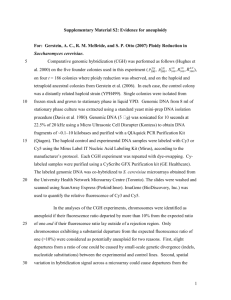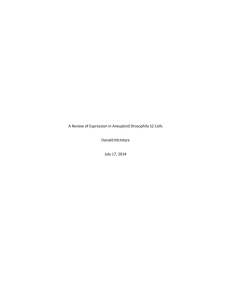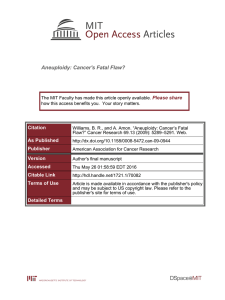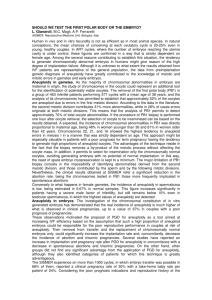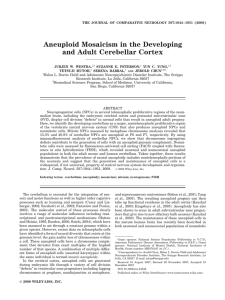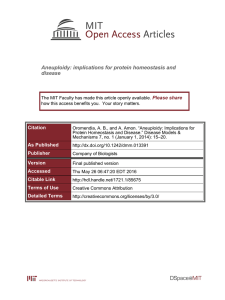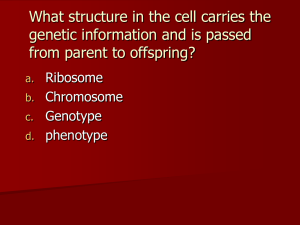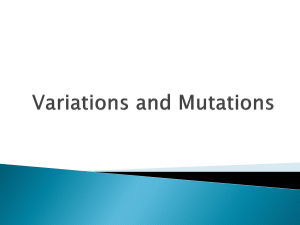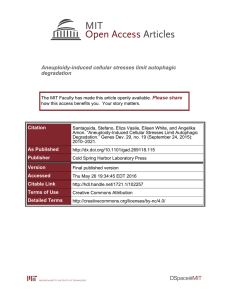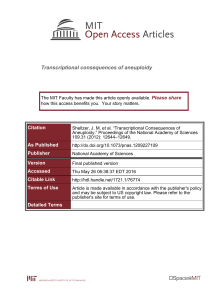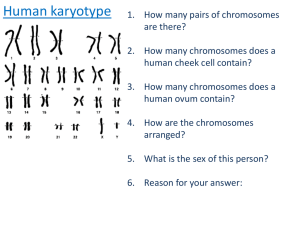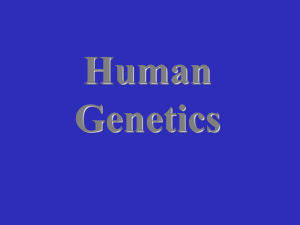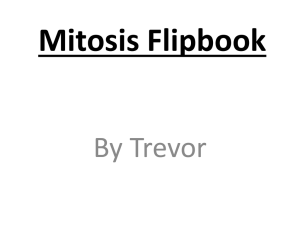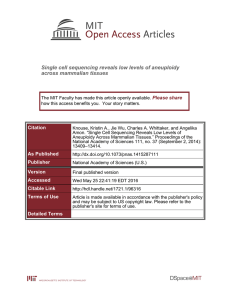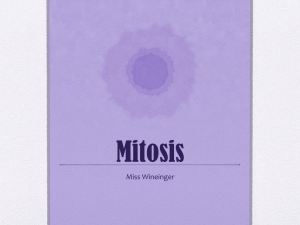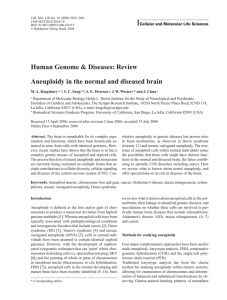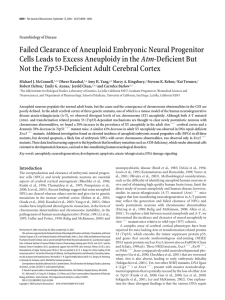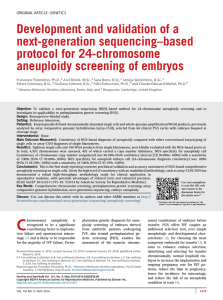my talk - David Rasnick, PhD
advertisement
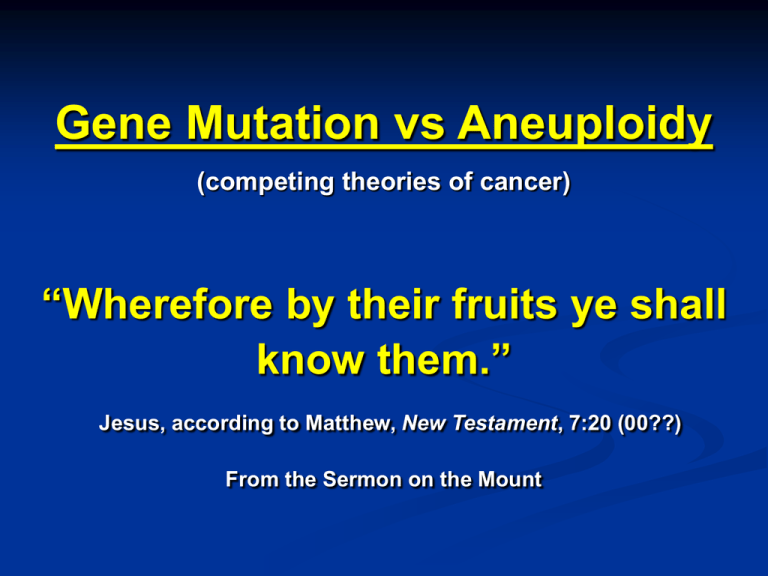
Gene Mutation vs Aneuploidy (competing theories of cancer) “Wherefore by their fruits ye shall know them.” Jesus, according to Matthew, New Testament, 7:20 (00??) From the Sermon on the Mount High Magnification Explanation of Cancer Subtlety is not a Hallmark of cancer Normal cells 46 chromosomes Cancer cells 60-90 chromosomes Poorly Differentiated Cancer of Cervix 78 Chromosomes, DNAindex=1.7 Hansemann’s Low Magnification Explanation Virchows Archiv für pathologische Anatomie und Physiologie und für klinische Medicine 123:356-370, 1891 David Hansemann 1858-1920 Theodor Boveri …formulated the first aneuploidy theory of cancer in 1914 Aneuploidy is an imbalance in the number or composition of chromosomes, hence an imbalance in thousands of genes Boveri’s Mutation-Free Mechanism for the Production of Aneuploidy Autocatalyzed Progression of Aneuploidy is Carcinogenesis How Cancer Starts and Progresses copies 8 Normal cell (DNAindex = 1.0) 4 2 1 2 3 4 5 6 7 8 9 10 11 12 13 14 15 16 17 18 19 20 21 22 23 Chromosome Number How Cancer Starts and Progresses copies Initiation & Pre-cancer 8 4 (0.5 DNAindex 1.2) Low level aneuploidy caused by radiation, carcinogen, bad cell division 2 1 2 3 4 5 6 7 8 9 10 11 12 13 14 15 16 17 18 19 20 21 22 23 Chromosome Number How Cancer Starts and Progresses copies 8 Early cancer Tetraploidization (DNAindex ≈ 1.9) 4 2 1 2 3 4 5 6 7 8 9 10 11 12 13 14 15 16 17 18 19 20 21 22 23 Chromosome Number How Cancer Starts and Progresses copies 8 Mature Cancer (DNAindex ≈ 1.7) 4 2 1 2 3 4 5 6 7 8 9 10 11 12 13 14 15 16 17 18 19 20 21 22 23 Chromosome Number The Molecular Basis of Dominance Kacser H & Burns JA. Genetics 97:639-666, 1981 “dominant-negative” Mutation of one gene is undetectable in multi-gene phenotype DATE Applied to Cancer DATE analysis is a modification of MCA Rasnick & Duesberg (1999) Biochem J 340:621-630 DATE Analysis Fundamental Equation • Fa, aneuploid phenotype • , • , aneuploid fraction ploidy factor Fcell Fa 1 Setting Fcell 1 and 1 m n 1 m n m 6 in Eq. 6 yields Eq. 7. n 7 Fa The general form of Eq. 7 is... 1 1 Fa Fa represents the phenotype of a cancer cell relative to the normal cell. Properties of Aneuploid Cells Massive change in gene dose produces highly nonlinear (i.e. qualitative) changes in the physiology and metabolism of cells and tissues. (aneuploid fraction) (fold change) Fd (diploid) Fa (aneuploid) Live tetraploid births Live triploid births There is an infinite number of combinations of and but there are optimal values of and At equilibrium, =0.7 & DNAindex=1.7 for mature solid cancer Aneuploidy Diagnostic of All Stages of Cancer Normalized average CI=1.7 Normal cells on same slide Confirm Bulten et al. Chromosomes 7 & 17 equally useful for detecting cervical cancer percent of cells aneuploid for Cep-7 Our Results percent of cells aneuploid for Cep-17 Hariu & Matsuta Confirm Bulten et al. Chromosomes 1&17 equally useful for cervical cancer AND Suggests the fraction of aneuploid cells is diagnostic of stage 0 N CIN1 CIN2 CIN3 CI CANCER Hallmark of Cancer, Genetic Instability, is Quantifiable A measure of genetic instability is the imbalance between overall metabolic activity (Fa) and DNA content of aneuploid cells. SF=flux stability index (0SF1) Rasnick & Duesberg (1999) Biochem J 340:621-630 Predicted Curve of Stability Index SF 1.0 Most unstable DNAindex is halfway between diploid and tetraploid S 0.9 0.8 1.0 1.5 DNA index 2.0 Aneuploid Cells in Culture Confirm Genetic Instability Theory 1.0 Colon cancer cell line data from Lengauer et al. (1997) show that the least stable cells have DNA indices halfway between diploid and tetraploid values. 0.9 0.8 0.7 0.6 Rasnick & Duesberg (1999) Biochem J 340:621-630 0.5 0.4 0.5 1.0 1.5 2.0 2.5 3.0 DATE Applied to Colon Cancer Rasnick & Duesberg (1999) Biochem J 340:621-630 …analyzed… colon cancer data from Zhang et al. (1997) Science 276:1268-1272 Autocatalyzed Progression of Aneuploidy Explains the Time Course of Human Cancer Equation (solid line) fitted to data from Armitage & Doll (1954) Br J Cancer 8:1-12. Broken lines are for best-fit 7-gene mutation model. N t N e kt 1 1 1 1 0 Rasnick, D (2000) Biochem J 348:497-506 lung men lung women breast cervical prostate colon men Closing Comment The “my-favorite-gene” approach of molecular biology is hopelessly inadequate when trying to understand and explain multi-gene phenotypes. However, dynamical methods, such as MCA and DATE, provide powerful new tools for investigating complex phenotypes that span many orders of magnitude.
